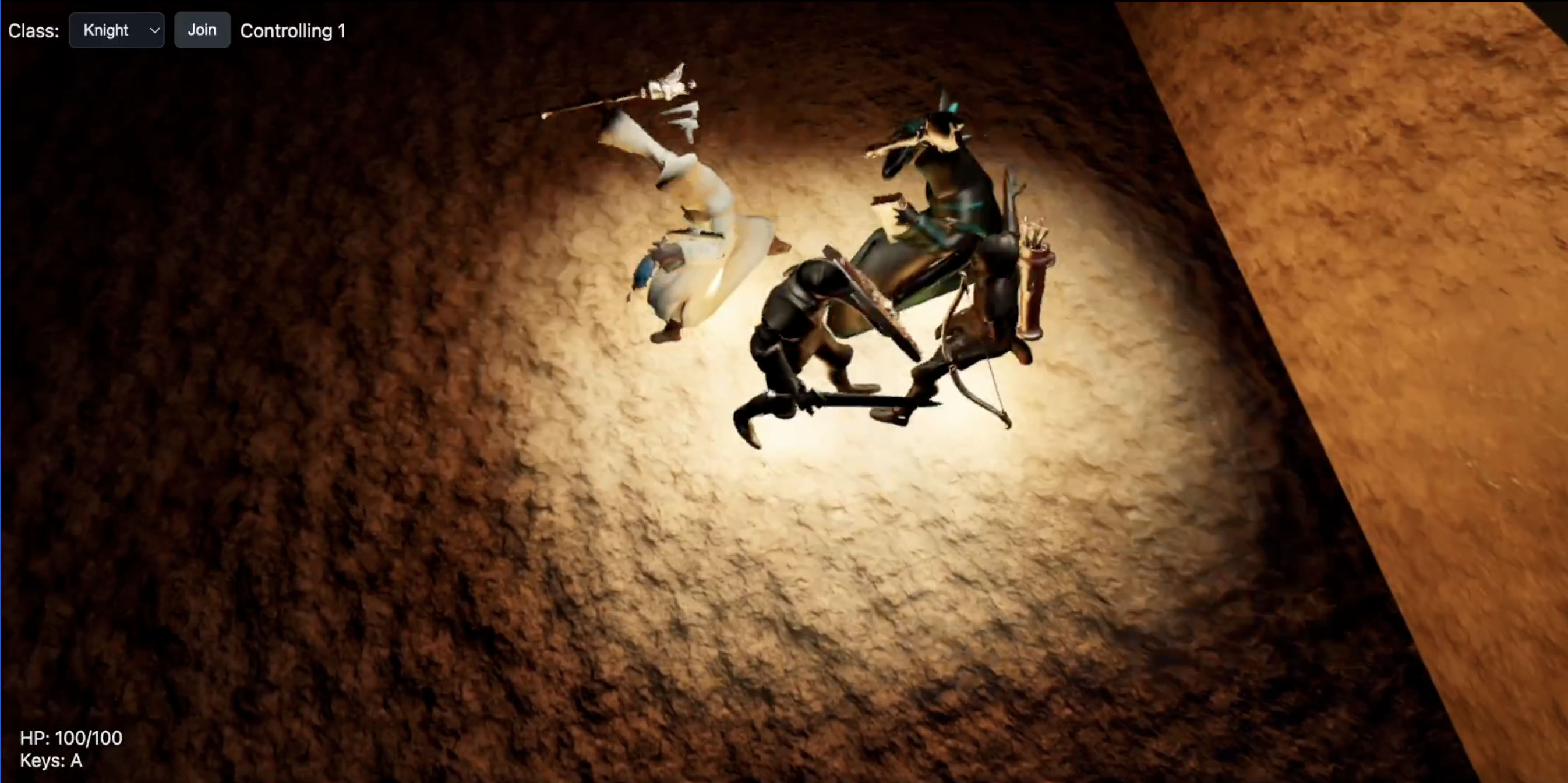Group Adventure
Gameplay Preview

Overview
Group Adventure is a 4-player cooperative dungeon crawler built from the ground up to explore real-time networking, scalable game architecture, and advanced 3D rendering. This project demonstrates my ability to design production-grade systems while still delivering an engaging player experience.
Goals
- Build a real-time multiplayer experience with server authority and client-side prediction
- Showcase mastery of the Entity-Component-System (ECS) pattern
- Implement advanced features such as delta compression, procedural generation, and skeletal animation blending
- Optimize for performance and scalability while deploying in a cloud-native environment
Tech Stack
Backend
- Node.js + Express – REST endpoints and server orchestration
- Socket.IO (v4.7.5) – real-time communication
- Custom ECS – server-side game logic, AI, and state management
Frontend
- Vanilla ES6+ – lightweight, framework-free client
- Three.js – 3D rendering, lighting, materials
- FBX/GLTF pipeline – character and environment assets
- Custom animation FSM – blending, layering, and combat sequences
Infrastructure
- Dockerized build – portable and reproducible
- Fly.io deployment – scalable hosting
- Ping & jitter simulator – network condition testing
Architecture
Dual ECS Design
- Server ECS – authoritative logic (combat, AI, health, loot, dungeon state)
- Client ECS – rendering, animation, player UI
- Shared schema – ensures both client and server "speak the same language"
This design achieves separation of concerns, prevents cheating, and supports scalability.
Key Features
🔹 Delta Compression
- Intelligent update system categorizes data (HIGH / MEDIUM / LOW frequency)
- Sends only changed components instead of full states
- Reduced bandwidth usage by up to 80%
🔹 Procedural Dungeon Generation
- Cellular automata for natural cave formations
- Flood-fill connectivity analysis ensures playable layouts
- Endless replayability through unique dungeon seeds
🔹 Advanced Animation System
- Custom finite state machine for idle, movement, and combat
- Blended animator for seamless transitions
- Layered animation control for equipment and abilities
🔹 Multiplayer Session Management
- Lobby system for 4-player coordination
- Real-time synchronization of combat, loot, and dungeon state
- Network simulation tools for testing lag and packet loss
Developer Experience
- Modular ECS – easy to add new systems (e.g., Ranged Attacks, Magic Projectiles)
- Network simulator – built-in debugging for latency, jitter, and loss
- Performance tools – FPS tracking and bandwidth profiling
- Clean codebase – readable, maintainable, and extensible
Results & Impact
- Demonstrated mastery of real-time multiplayer and network optimization
- Created a scalable architecture for future expansion
- Built a project that serves as both a game prototype and a technical showcase
What I Learned
- Balancing server authority with client smoothness is critical for multiplayer games
- ECS architecture provides unmatched scalability when building complex systems
- Debugging under simulated network stress is invaluable for real-world resilience
Conclusion
Group Adventure is more than a game — it's a proof of concept for how I approach large-scale, networked, real-time systems. By blending clean architecture with advanced graphics and networking, I created a project that demonstrates both engineering discipline and creative design.